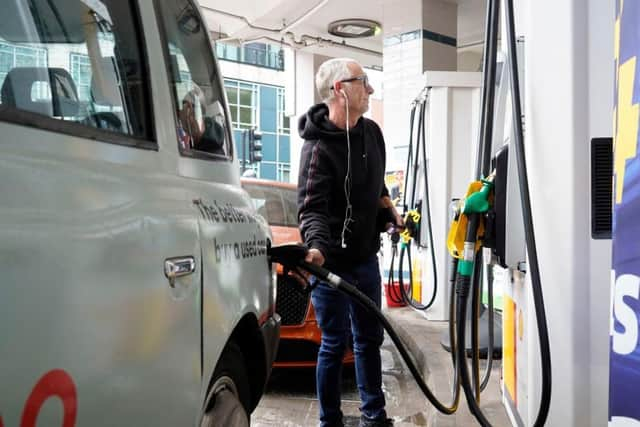Fuel shortages were secretly building at filling stations more than 3 weeks before panic-buying started in Milton Keynes and elsewhere, new figures show
and live on Freeview channel 276
Fuel shortages had been secretly building at filling stations for more than three weeks before becoming public and sparking panic-buying, new figures show.
Stocks of petrol and diesel shrank first in London and the South East, before spreading to the rest of the country, the Government data reveals.
Advertisement
Hide AdAdvertisement
Hide AdAnd this region continues to be hardest hit by the tanker driver shortage, with the Petrol Retailers’ Association revealing that 13% of independent retailers in London and the South East were still dry yesterday.


Gordon Balmer, its executive director, said: “Attempts by the Government to deal with this fuels crisis, now into its 14th day, have thus far had only limited success in London and the South East.
“Much more attention on this issue affecting this region is urgently needed.”
Experimental data released today by the Department for Business, Energy and Industrial Strategy (BEIS) reveals that average stocks at British forecourts had been below pre-pandemic levels since May and had dwindled steadily from August 30.
Advertisement
Hide AdAdvertisement
Hide AdSupplies of petrol and diesel at the average forecourt had fallen to just a third of capacity (33%) by September 18 - five days before forecourt closures came to public attention, sparking widespread panic-buying.
London felt the pinch first, with forecourt stocks falling to a third of capacity as early as September 10.
The data is based on end-of-day stock figures at about 4,500 filling stations, representing 80% of the market.
The Government has this week deployed almost 200 military tanker personnel, 100 of whom are drivers, to provide temporary support to relieve pressure on petrol stations and address the shortage of HGV drivers.
Advertisement
Hide AdAdvertisement
Hide AdAnnouncing the move last weekend, Business Secretary Kwasi Kwarteng said: “Thanks to the immense efforts of industry over the past week, we are seeing continued signs that the situation at the pumps is slowly improving.
“UK forecourt stock levels are trending up, deliveries of fuel to forecourts are above normal levels, and fuel demand is stabilising.”